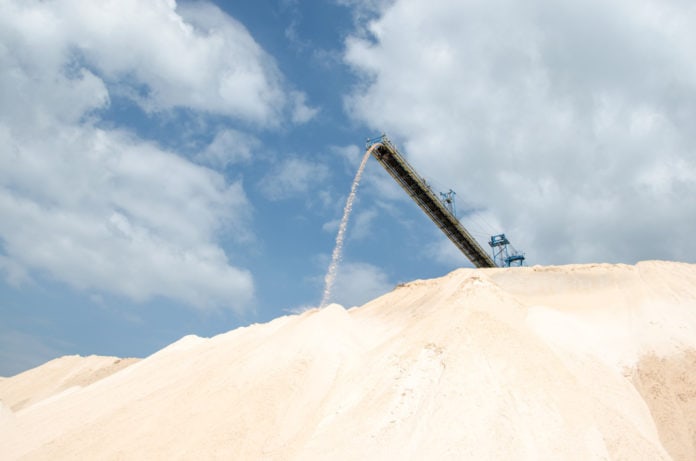Proppant is often used during the well stimulation operations to keep the fractures open after the fracturing process is complete.
If you are not familiar with fracturing, it is a process that involves pumping fluid, chemicals, and proppant at high pressure down the wellbore to create fractures in the formation and allow hydrocarbons to flow more easily towards the well.
If proppant is not used, most of these newly created fractures will close after the surface pressure drops and hydrocarbons will not flow towards the wellbore.
The two most common types of proppant that are used in the oil and gas industry are sand and ceramic.
These two materials are relatively cheap and strong enough to handle downhole forces without crushing.
Related: What is Hydraulic Fracturing?
What is Proppant Mesh Size?
There are different sizes of proppant that are used depending on the formation requirements.
Larger size proppant usually provides better conductivity but is easier to crush which might result in partial closure of a fracture.
Proppant is measured in mesh sizes and commonly comes in sizes between 8 and 140 mesh.
Mesh size represents the number of openings per square inch on a screen used to measure the size of the proppant.
The lower the mesh size of the proppant, the bigger is the size of the particles.
Some examples of proppant sizes that are commonly used are 20/40, 30/50, and 70/140 mesh.
The two numbers represent a range in which proppant size falls.
Related: Working as a Frac Equipment Operator
How Proppant is Chosen for the Job?
There are a few parameters that are used to decide what proppant should be used for a job.
Proppant Size – as we already discussed proppant size will dictate how easy the hydrocarbons will be able to flow through the fracture and into the well.
Proppant Density – higher density proppant settles quicker in the well but can handle higher formation stresses.
Proppant Strength – this will indicate how much stress proppant particles will be able to handle in the well before crushing.
Proppant Shape – usually the proppant particles that are more round in shape can handle higher stresses.
Purity – this indicates the ammount of impurities in the proppant that can potentially decrease the conductivity of the fracture. Most of these impurities are usually proppant fines.
Common Types of Proppant
Sand – often naturally occurring sand is used as a proppant. It is cheap, widely available, provides great conductivity, and can handle formation stresses in most wells.
Ceramic – is an artificially created proppant that provides better conductivity and can handle higher stresses than sand. However, it is more expensive. It is usually used in deeper wells with higher formation stresses.
Resin Coated Sand – is used to prevent sand flow back to the surface after the frac and to avoid fines that decrease production by plugging small pores. It is also can handle higher formation stresses than pure sand.
Read next: Top 10 Chemicals Used In Hydraulic Fracturing Process
